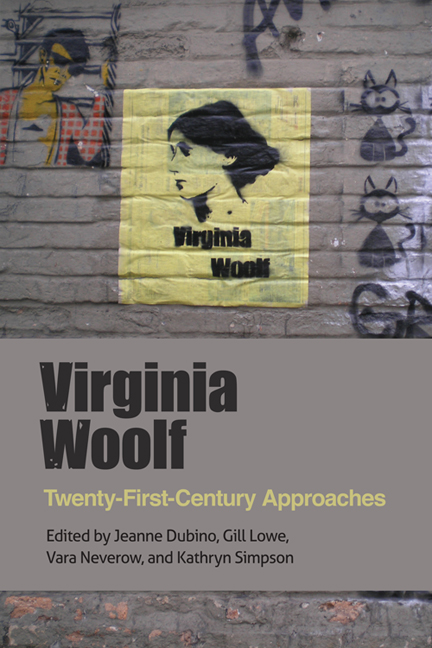Book contents
- Frontmatter
- Contents
- Acknowledgements
- Contributors
- Abbreviations
- Introduction
- PART ONE Self and Identity
- 1 ‘I am fast locked up’, Janus and Miss Jan: Virginia Woolf's 1897 Journal as Threshold Text
- 2 Elusive Encounters: Seeking out Virginia Woolf in Her Commemorative House Museum
- PART TWO Language and Translation
- PART THREE Culture and Commodification
- PART FOUR Human, Animal, and Nonhuman
- PART FIVE Genders, Sexualities, and Multiplicities
- Index
1 - ‘I am fast locked up’, Janus and Miss Jan: Virginia Woolf's 1897 Journal as Threshold Text
from PART ONE - Self and Identity
Published online by Cambridge University Press: 05 August 2016
- Frontmatter
- Contents
- Acknowledgements
- Contributors
- Abbreviations
- Introduction
- PART ONE Self and Identity
- 1 ‘I am fast locked up’, Janus and Miss Jan: Virginia Woolf's 1897 Journal as Threshold Text
- 2 Elusive Encounters: Seeking out Virginia Woolf in Her Commemorative House Museum
- PART TWO Language and Translation
- PART THREE Culture and Commodification
- PART FOUR Human, Animal, and Nonhuman
- PART FIVE Genders, Sexualities, and Multiplicities
- Index
Summary
On 6 January 1897, within a week of starting to write her first personal journal, Virginia Stephen's privacy was encroached upon. She writes, ‘Pauline found the key of this book so that I am fast locked up’ (PA: 8). Virginia, almost fifteen, identifies herself closely, but ambivalently, with ‘this book’, consistently personifying it. She locks up her journal denying it an audience, either her self or any other. Conventionally a diary is seen as a place to freely express private thoughts about self and others. Frequently young diarists use their writing to release emotions and explore ideas, but, in 1897, Virginia refuses to do this: she prefers to lock her self away. She is unwell; her mother Julia's premature death in 1895 was traumatic; during 1897 her half-sister Stella marries, becomes pregnant, suffers debilitating illness and dies. On 1 January 1898, after the grievous blow of losing Stella, Virginia reprises the act of locking, ‘Here is a volume of fairly acute life (the first really lived year of my life) ended locked & put away’ (134). The effect of combining ‘ended’ ‘locked’ with ‘put away’ is striking. ‘Put away’ implies being set aside, hidden from sight, boxed and compartmentalised. Throughout 1897 Virginia was in abeyance: ‘a state of suspension, temporary non-existence or inactivity; dormant or latent condition liable to be at any time revived’ (Oxford English Dictionary 1978: 17). This journal shows Virginia averse to creating a personal narrative; she is ‘locked & put away’.
The lock is a trope described by Gaston Bachelard as ‘a psychological threshold’ (1994: 81). A key may turn two ways but it ‘closes more often than it opens’; ‘the gesture of closing is always sharper, firmer and briefer than that of opening’ (73). A key often effects a negation. A Room of One's Own explores women's access to education; it famously dramatises a denial when Woolf is told not to trespass on the smoothly rolled turf of an Oxbridge college.
- Type
- Chapter
- Information
- Virginia WoolfTwenty-First-Century Approaches, pp. 17 - 33Publisher: Edinburgh University PressPrint publication year: 2014



